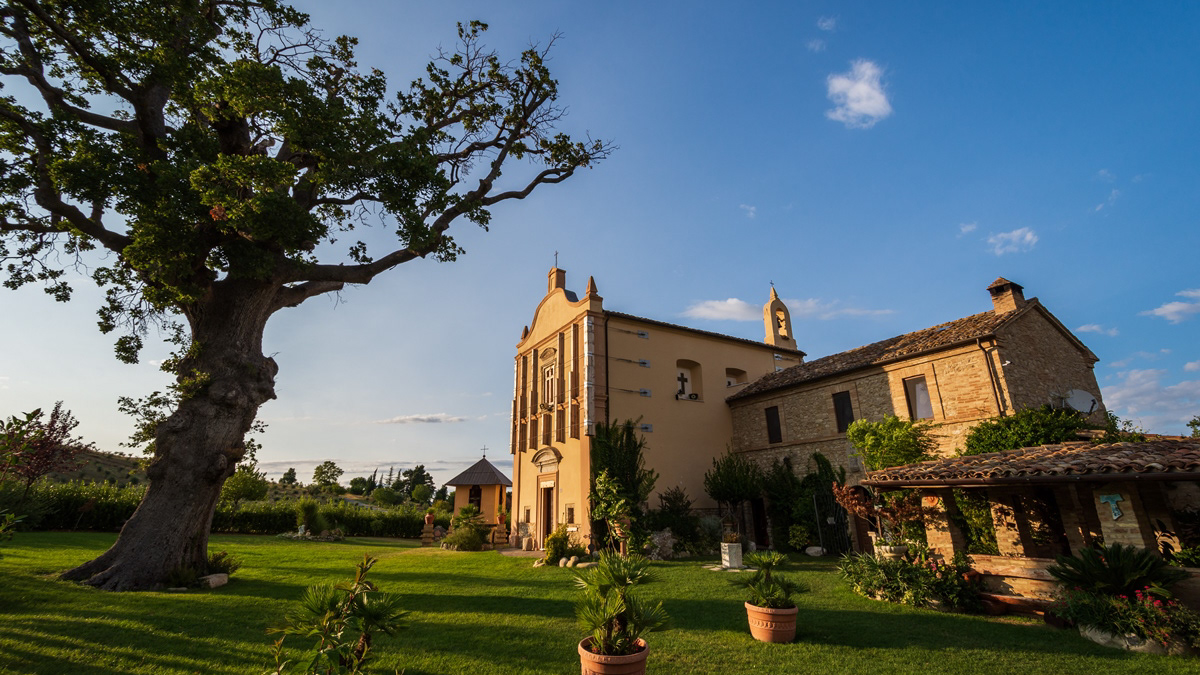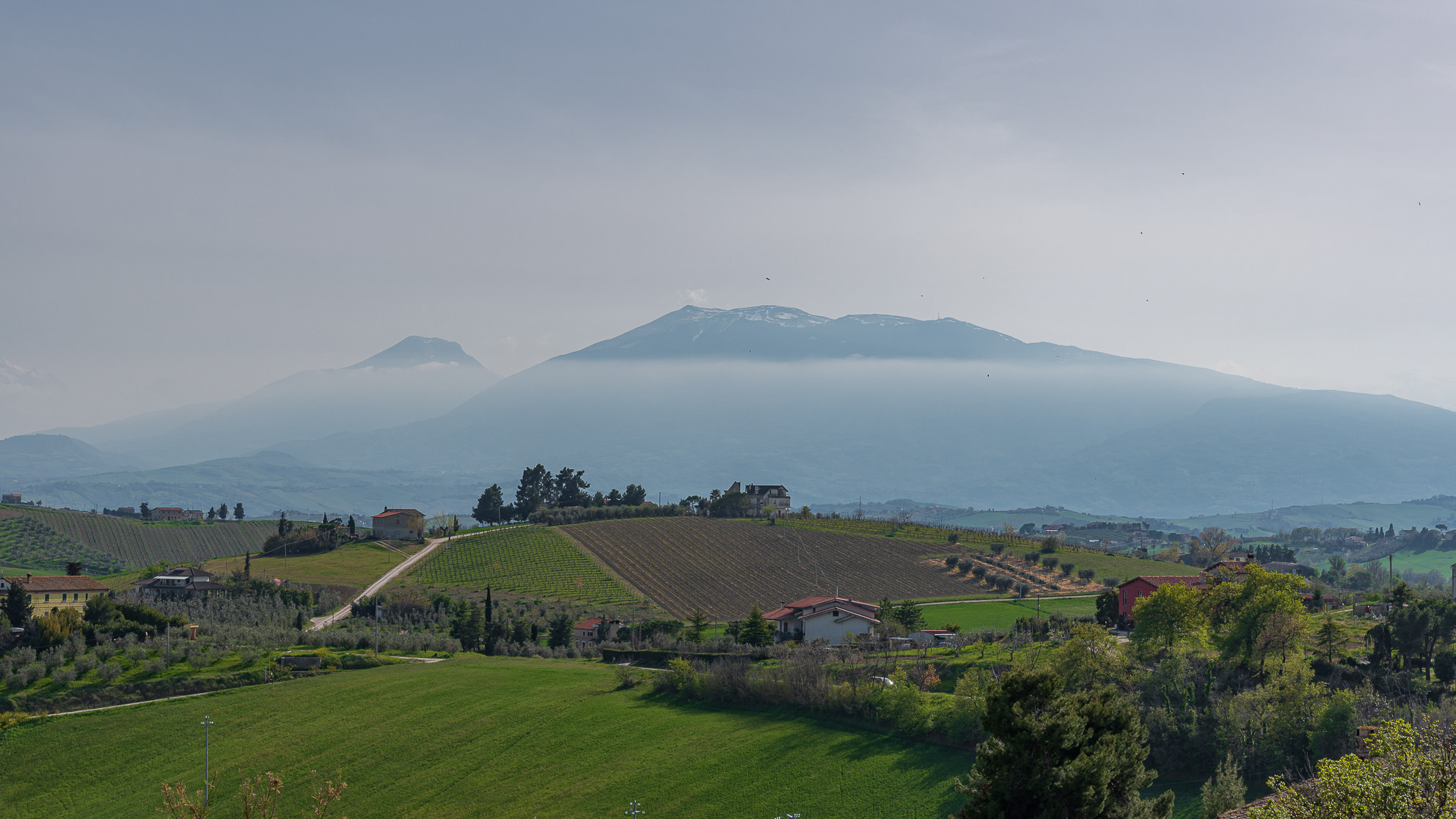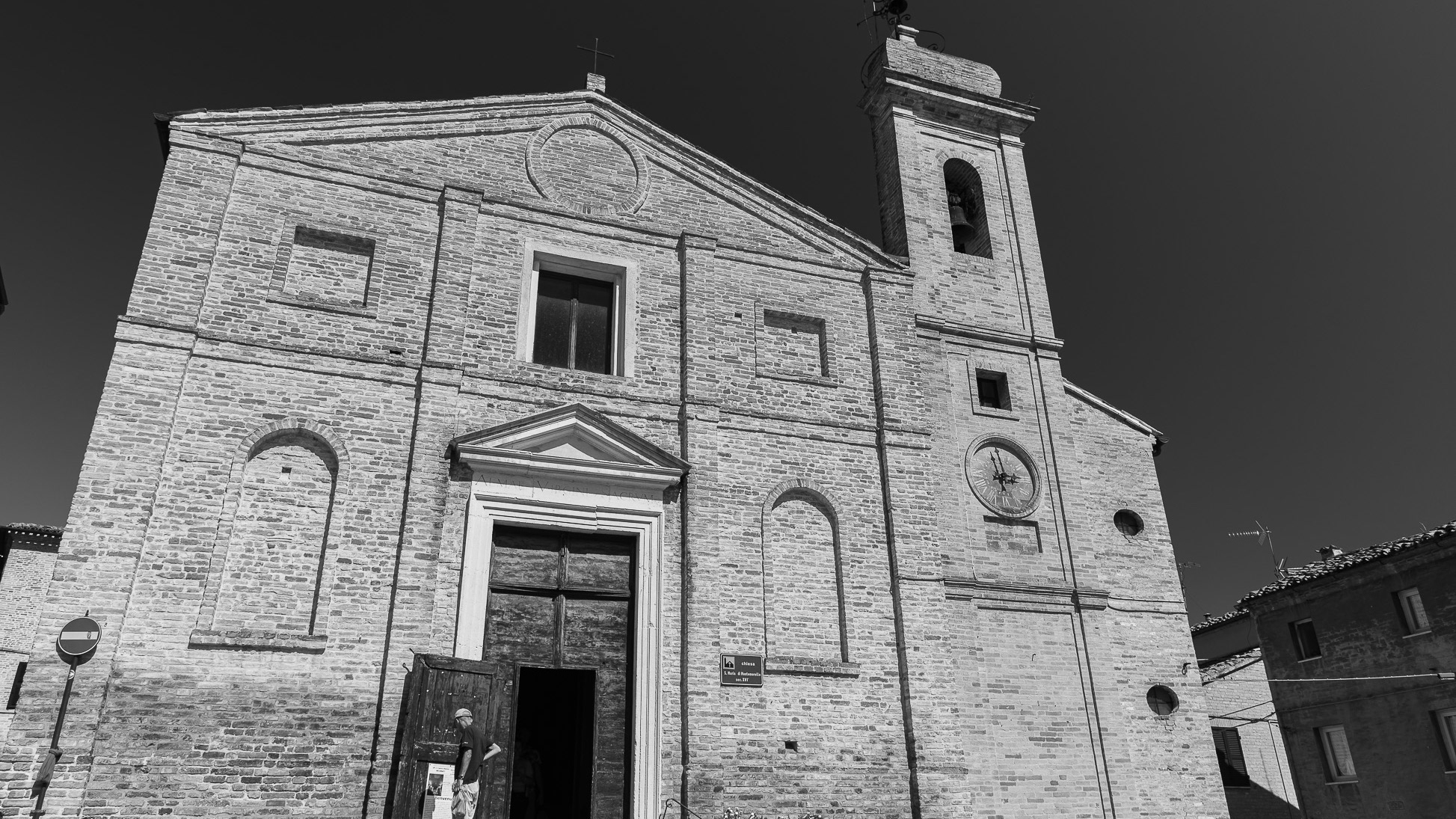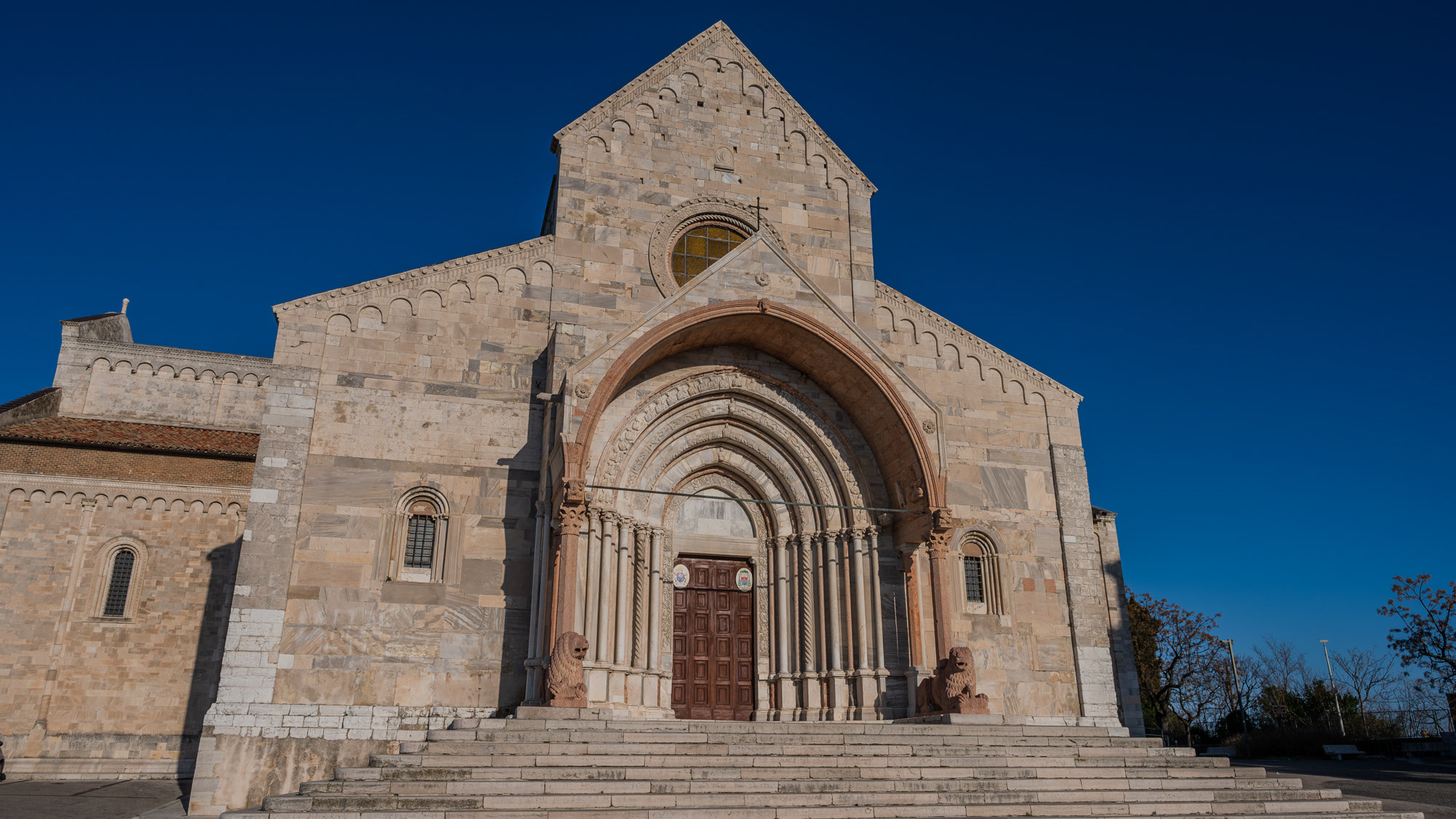Ascoli Piceno, Marche. The Cathedral of San Emidio
2022
The city's cathedral, dedicated to the patron saint, stands on the site of a Roman public building, perhaps the Basilica del Foro, and is the result of multiple construction events that substantially range from the 11th to the 16th century.
You may also like

2025
Adriatic Sea. Cupra Marittima.

2024
Loreto. The Basilica of the Holy House
The Basilica of the Holy House is one of the main places of veneration of Mary and one of the most important and visited Marian shrines of the Catholic Church. It is located in Loreto.

2018
Rotella - Sanctuary of the Madonna della Consolazione
In a small clearing, at the foot of Mount Ascension, there is the Sanctuary of the Madonna della Consolazione or of Montemisio. The Church was built by the monks of Farfa, built on the ruins of a pagan temple dedicated to the goddess Artemis or Artemisia. The cult passed first for the veneration of the Virgin of the Belt, then for the Madonna della Tempera (of the water needed for the fields). A legend tells that, while the drought threatened the crops, a propitiatory procession was held. The statue of the Madonna had just set off, when the sky darkened and the beneficial rain fell. In the 18th century, after the restoration, the church became a place of worship for the Madonna della Consolazione. Today the sanctuary is the destination of numerous pilgrimages. The traditional festival takes place on August 15th. The chapel has a single nave, a terracotta floor and a travertine altar. In the garden stands a centuries-old oak tree over 23 meters high, with a circumference greater than 5 meters.

2022
Wonderful view of the Marche hills

2022
Recanati. The church of Santa Maria di Montemorello
The church of Santa Maria di Montemorello is located in Recanati. The church has a certain notoriety for being the parish of the Leopardi family, where the poet Giacomo Leopardi also went to pray.
2022
Recanati. Views
Recanati is an Italian town of 20 975 inhabitants in the province of Macerata in the Marche region.

2024
Acquaviva Picena. Glimpses
Acquaviva Picena is an Italian municipality of 3,630 inhabitants in the province of Ascoli Piceno in the Marche region

2024
Ancona. La Cattedrale di San Ciriaco
The cathedral of Ancona is dedicated to San Ciriaco. It is a medieval church in which the Romanesque style blends with the Byzantine one, evident in the plan and in many decorations
2022
Offida, Ascoli Piceno. Piazza del Popolo, the Town Hall
Town Hall. Built between the 13th and 14th centuries (central crenellated tower). The façade is preceded by a 7-arched portico with an elegant 14-arched loggia raised in the 15th century. Inside there is a small art gallery with works by Pietro Alamanno and Simone de Magistris from Caldarola. In the municipal historical archive there is, among other things, the mutilated parchment cadastre of the fourteenth century with a good 70 parchments in Gothic characters.
2022
Castel Trosino, Ascoli Piceno. Glimpses
Castel Trosino is a small village of medieval origins which embodies an important series of historical, architectural, cultural and environmental "values". Castel Trosino has always been located in an important area that leads from the Apennine passes to the Adriatic Sea. It is in fact widespread opinion that the original Salaria consular road passed on this route, we do not know if this corresponds to the truth, but it is certain that through this important village there was a route that connected with the southern area of Umbria, a director widely used in Roman and early medieval times. The small village is located on a travertine rock (the main material of the area) as a cliff over the Castellano valley. The small village of the castle itself is organized around a central street that penetrates inside to the main square in front of the church dedicated today to San Lorenzo Martire.
